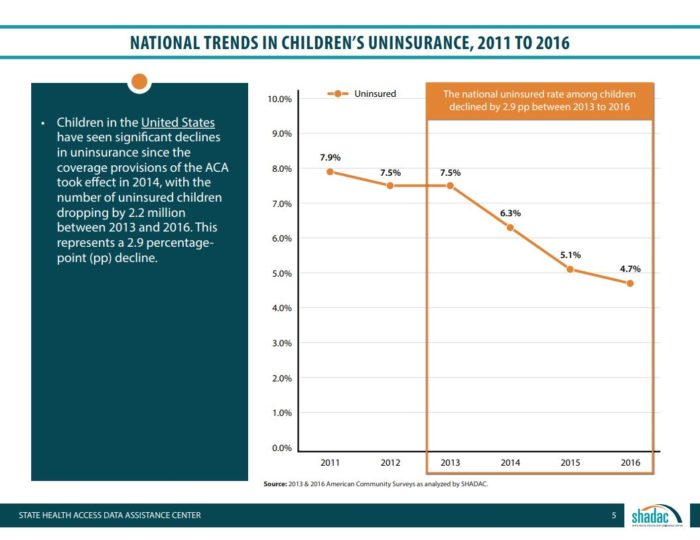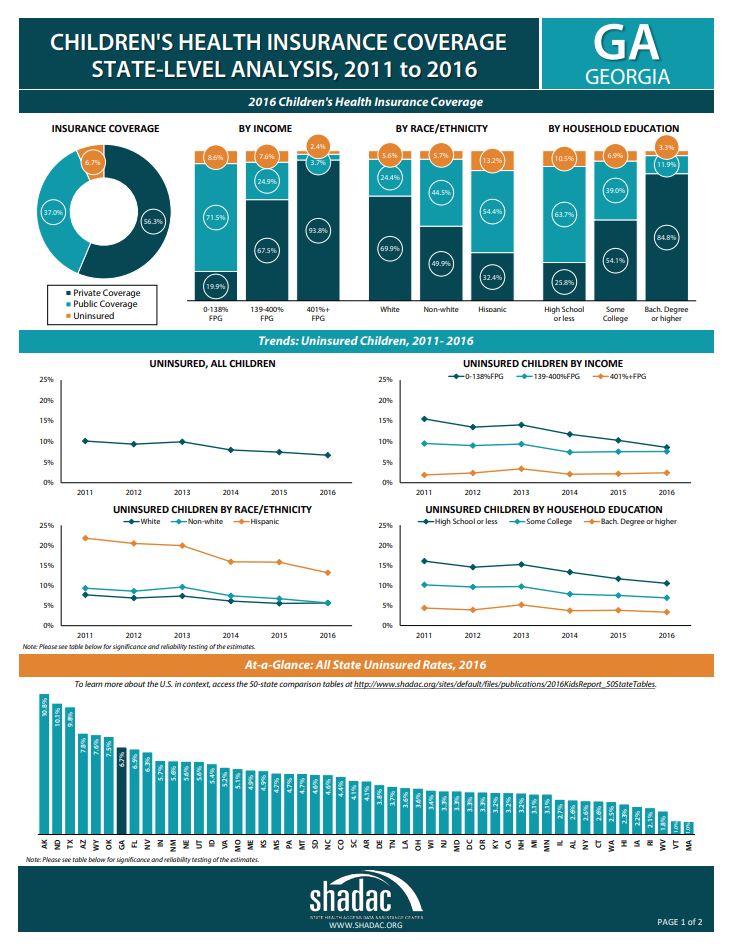The state has seen a decrease of more than 85,000 in its number of uninsured children since the Affordable Care Act was implemented, a new report says.
Georgia had the fourth-highest such decrease among states from 2013 to 2016, said the report from the University of Minnesota’s State Health Access Data Assistance Center.
The decline in Georgia represents a 32 percent reduction in uninsured kids in the state. The percentage of uninsured children here fell from 10 percent to 6.7 percent in 2016.
Nationally, 2.2 million fewer children are uninsured during this time period, reflecting a 38 percent decrease in the number of uninsured kids nationwide, said the report, funded by the Robert Wood Johnson Foundation.

The ACA has led to coverage gains among adults as well. Georgia’s rate of uninsured dropped in 2016 to about 13 percent of adults, but that percentage is among the highest in the U.S.
States with the largest decreases in the number of uninsured children from 2013 to 2016 are:
** California (455,150 fewer uninsured children)
** Texas (225,678)
** Florida (212,363)
** Georgia (85,337)
** Arizona (83,322)
These five states represent nearly 50 percent of the total decrease in uninsured children in the United States, but remain the five states with the most uninsured children in 2016, the report said.

“The decline in the number of uninsured children after the enactment of the ACA is historic and persistent,” said report author Elizabeth Lukanen in a statement. “It is especially encouraging to see [these] rates drop in almost all states and across children of different demographic and income groups.’’
Given the uncertain health policy environment, ongoing monitoring of uninsured kids is needed to ensure that reductions in coverage are sustained, she added.
Researchers, citing Census data, said the drop in the number of uninsured children in Georgia cut across racial, ethnic and economic levels. Among non-white children, there were more than 41,000 fewer uninsured kids, or a 39.7 percent drop. Also, those from low-income households declined, with almost 65,000 fewer uninsured kids, or a 43.6 percent drop.
The percentage of uninsured children in Georgia dropped regardless of the highest level of education attained in the household, the report said. The reduction was largest in households where the highest education level was high school or less, from 15.2 percent of children in such households being uninsured in 2013 to 10.5 percent in 2016, the report said.
Polly McKinney of the advocacy group Voices for Georgia’s Children said Monday that the data show a promising trend.
But she noted that currently, more than 162,000 children in Georgia still lack health insurance.
“Our analysis indicates that frequently, children obtain coverage initially, but then fall off at renewal, despite being eligible,’’ McKinney said. “So while the progress since 2013 is impressive and should be celebrated, we nevertheless have a long way to go to remove barriers to coverage for kids.’’


